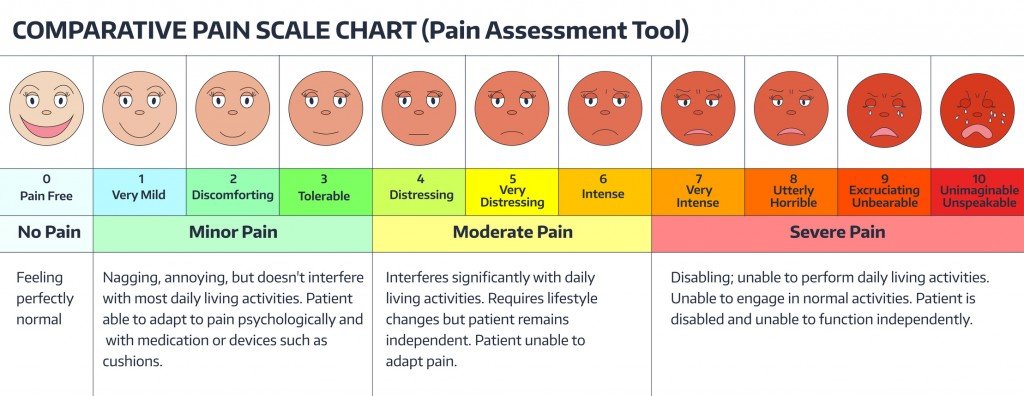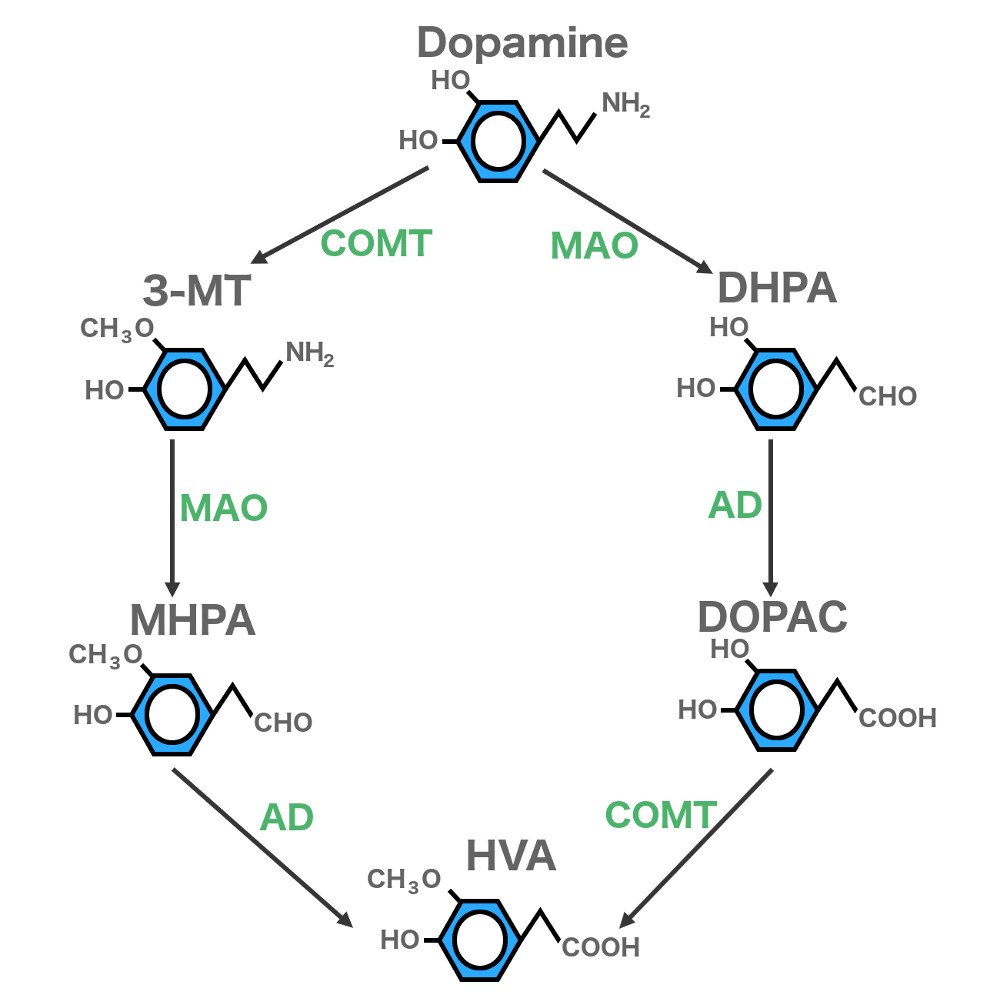There is no ultimate threshold for pain in human beings. Researchers’ best guess is that the maximum pain a human can tolerate is somewhere higher than 11 dol (somewhere between childbirth and taking a blowtorch to your face).
When you slam your finger in a car door, it probably feels like the worst possible pain in that instant, but a few minutes later, when the searing ache begins to dull, we return to reality.
We remember that we hadn’t just been hit by a bus, shot by an arrow, or dismembered by a horse and carriage. From that perspective, all seems right with the world.
Yet it makes one wonder… what is the worst possible pain for human beings? More importantly, how much pain can we actually handle before passing out, dying, or completely losing our minds?
What Is Pain Threshold?
At a very basic level, the pain threshold is the point at which a subject begins to experience pain from an outward stimulus. For example, a clamp being closed around your wrist would not immediately hurt. It would start with discomfort, and then the fight or flight response would begin as you start to feel constricted. Finally, you would experience “pain”, so that tightness would be the pain threshold pressure.
Your pain threshold is likely different (if only minutely) from every other person. The same is true for the pain threshold temperature (when heat or cold begins to register in your subjective mind as “painful”).
This shows us that every person’s pain threshold is different, but does that arise from psychological, physical, or genetic factors? That is something that researchers have been trying to determine for many years, as the understanding and prevention of pain is one of our favorite hobbies as human beings (honestly… who likes slamming their finger in a car door?).
For researchers to study anything with scientific precision, a scale of measurement is required, but establishing that scale isn’t as easy as you might think.
Also Read: Do We Feel Pain When We’re Unconscious?
What Is Pain Tolerance?
This basically indicates how much pain can a person tolerate. There are two components of Pain Tolerance. First is the pain receptors in our skin that send the signal to the brain. And the second is the brain’s perception of the pain.
This decides how much attention is given to the pain or should it be ignored. Multiple factors determine the tolerance of each individual. Some of these factors are Sex, Age, Neonatal injury, and Psychological factors.
Dolorimetry Is A Way To Measure To Pain
In their efforts to quantify pain, researchers at the University of Cornell devised an experiment in which they would burn the foreheads of their research subjects for three seconds at a time.
Based on the Latin word dolor (pain), they created a unit of measurement for pain (the dol). They created a 0-10.5 scale. After burning their unlucky subjects repeatedly (more than 100 times, in fact), they asked the subjects to report the levels of pain that they felt using their scale.
Many of the subjects that had second degree burns reported feeling an 8 on the pain scale. Any measurement of pain over 11 dol was deemed “indiscernible”. In other words, the pain was too unbearable to even quantify for the research subjects. This method of measuring pain sensitivity is called Dolorimetry.
This unit of measurement never really caught on in the scientific community (for obvious reasons), and while there has been a good amount of talk concerning the ultimate threshold of pain for humans, there is simply no universal, objective scale in existence.
That’s the reason doctor’s offices still use those smiley-face charts when they ask you how much pain you’re experiencing. If you said, “Approximately 3.5 dols, the doctor probably wouldn’t even know what you meant, but when you point to an animated frowning face with tears in its eyes, the doctors understand.

That uncertainty stymies scientists, but it’s unavoidable. As mentioned above, physical, psychological, and genetic factors all play a role in the subjective perception of pain for human beings, making precise quantification and comparison nearly impossible.
The Brain’s Perception Of Pain Plays A Role In How Much Pain Someone Can Tolerate
As a child, imagine that you were protected from every possible danger by your parents (e.g., no climbing trees, no roughhousing, no bikes, no organized sports, etc.). If you have never experienced the pain of a broken bone or a blackened eye, your pain threshold would likely be quite low.
You’re not used to feeling pain, so it comes as more of a surprise, and physically, you would have a lower tolerance for pain. Another child who spent years scraping their knees, spraining their ankles, and being in and out of casts would likely develop a higher tolerance for pain. Once you break a few fingers falling off your skateboard, a bruised elbow doesn’t really seem that bad, right?
Psychologically, people also tolerate pain in different ways.
Some prefer to bear their pain in silence and stoicism, such as those who suffer chronic illnesses or injuries, while others resort to complaining, crying, and pill-popping as their manifestation of pain.
Some cultures see the admission of pain as a sign of weakness, so they have literally been conditioned in a “mind over matter” attitude by their family or society. One can also diminish pain by mental focus, clarity, and meditation.

One study showed that when subjects were instructed to think of a particular thought (either a neutral activity, a sexual fantasy, or no instructions), those imagining a sexual fantasy had a higher reported pain tolerance than those thinking of neutral activities.
This is another insight into the psychological nature of pain; if we can focus solely on pleasant or pleasure-inducing thoughts, we can legitimately dull our sensitivity to pain.
That leads to the final aspect of pain measurement, genetics. There is a particular enzyme (COMT) that is able to metabolize and break down dopamine, the neurotransmitter in the brain that can spread information (and pain) through the central nervous system.
If the COMT enzyme is highly active in a person’s natural chemistry, then less dopamine is present, and the body’s natural painkillers (endorphins) are able to bind where those pain-bearing dopamine transmitters would normally be. If there is a depleted level of COMT enzyme in the body, then dopamine occupies those receptors and the body’s natural pain relief system isn’t as effective.
Below is a diagram of the complex pathway through which dopamine is degraded. There are a lot of moving parts which makes studying the relationship between dopamine, pain and genetics like finding a needle in a haystack.

Clearly, there are a lot of factors to consider in the measurement of pain, and in answer to the original question, there is no ultimate threshold for pain in human beings. Researchers’ best guess is that it is somewhere higher than 11 dol (somewhere between childbirth and taking a blowtorch to your face).
Also Read: Why Do We Forget Pain When We’re Engaged In Another Activity?
Can You Pass Out Because Of Excessive Pain?
It’s not unusual for somebody to pass out because of intense pain. Many people have experienced it and the reason behind this is the lack of blood supply to the brain. So now you are thinking what does my pain have to do with blood supply to the brain?
The sudden spike in pain can lead to a temporary interruption in the functioning of your ANS (Autonomous Nervous System). The ANS is responsible for controlling your heart rate (HR) and blood pressure (BP). So the interruption in its working can lead to a drop in the HR and BP. This affects the blood supply to the brain which causes stress. This results in fainting. The amount of pain which could cause fainting depends on the person’s tolerance towards pain.
Just take our word for it…. and please don’t try to measure your own pain tolerance!
Test your knowledge about pain tolerance!

References (click to expand)
- NCBI - National Institutes of Health (NIH). The National Center for Biotechnology Information
- Hardy, J. D., Wolff, H. G., & Goodell, H. (1947, November 1). Studies On Pain: Discrimination Of Differences In Intensity Of A Pain Stimulus As A Basis Of A Scale Of Pain Intensity. Journal of Clinical Investigation. American Society for Clinical Investigation.
- Laatikainen, L. M., Sharp, T., Harrison, P. J., & Tunbridge, E. M. (2013, April 16). Sexually Dimorphic Effects of Catechol-O-Methyltransferase (COMT) Inhibition on Dopamine Metabolism in Multiple Brain Regions. (T. Burne, Ed.), PLoS ONE. Public Library of Science (PLoS).
